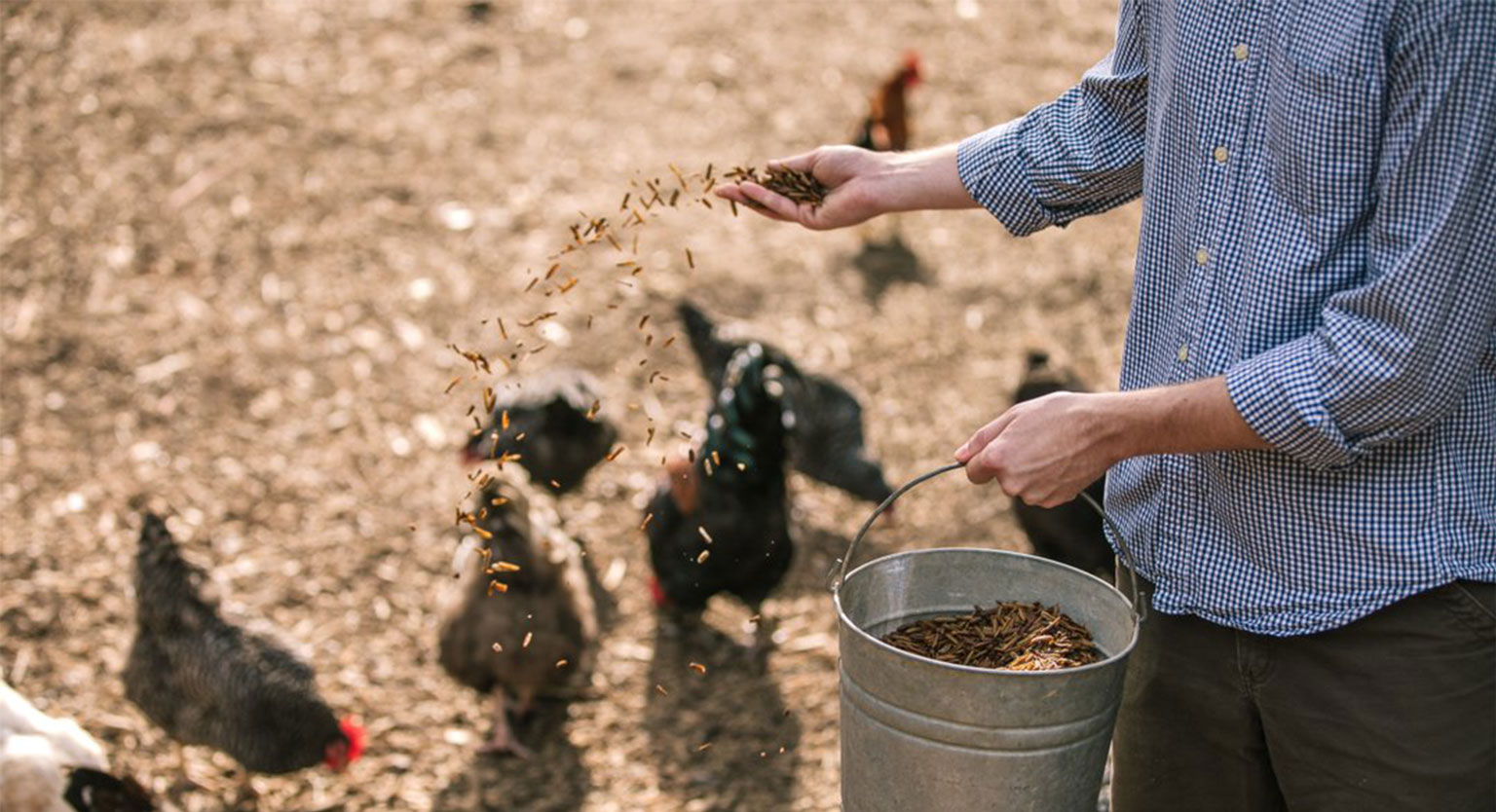Building a Multi-Million Dollar Business With Georgia Grubs

Sean Warner chose a major that he thought would help his business succeed.
Sean Warner (BC '15) is the co-founder and CEO of Grubbly Farms, which develops sustainable insect-based animal feed primarily to the chicken market. It was a CREATE-X startup that Warner said leans heavily on his building construction education. The grubs company has since raised almost $3 million.
The School of Building Construction knows that the agriculture industry is not the building construction industry. However, Warner's newfound success is a prime example of the applicable entrepreneurial and project management based skillsets taught by the Georgia Tech School of Building Construction.
Opportunities are what sets our program apart from other programs in the country. The skill sets and the lessons learned are a formula for innovation, not only in the industry-related professions but as entrepreneurs in any industry, according to Warner, a Forbes 30 Under 30 alumnus.
"There's always going to be a lot of moving pieces [in a startup]," Warner said. "Construction did a great job preparing me to deal with that and to organize my business into a cohesive structure."
The School studies how building projects address the needs of society, the environment, and the economy, and how the built environment shapes those areas in turn. We work across multiple disciplines — architecture, engineering, finance, city planning, and public policy — to meet advancing needs for efficient, sustainable building practices.
Warner sat down with us to tell us the value of his education and about how Grubbly Farm is providing sustainable agricultural solutions to the state of Georgia and beyond.
What attracted you to the undergraduate program at the School of Building Construction?
I was attracted to building construction because I liked the hands-on aspect of it all. I liked that it was a combination of civil engineering and business management, regarding how it helped personally with building the business. The scheduling and facility planning classes helped in designing the layout of the insect production facility. All of that we learned during the construction classes, and it was incredibly helpful for the first couple of years of our startup.
Another benefit around the construction industry is that it teaches you how to work with a wide range of people from subcontractors to C-level executives at some fortune 500 companies. It is a unique industry in that every single building project, you acquire a new team that has yet to work together. That person is to organize and manage all teams so that they are on the same track and schedule so that everything seamlessly comes together.
Which courses at the School of Building Construction do you think helped you the most?
Interestingly, one of the courses that persuaded or pushed me into the entrepreneurial world was the entrepreneurial class [BC 4660. Entrepreneurship in Construction]. I had not considered opening into a startup. I assumed I would join one of the large organizations I interned at, either John Wieland Homes or JE Dunn Construction. The entrepreneurial class put things into perspective.
There's a number of different avenues one can move into. Still, I would say another interesting course [BC 2610. Construction Technology I] shared various technologies that were emerging in construction. I thought that was absolutely fascinating because a lot of people view construction as relatively archaic when, in fact, it is adopting new technology at an incredible rate.
You look at drone technology, which can scan buildings or LiDAR technology, able to laser scan the interior of rooms to get the most accurate read of a building. It is exciting how you can take certain technologies developed for other industries and implement it into the construction process to streamline from ground to a finished product.
How does Grubbly Farms play a role in the Built Environment? What parallels do you see between agriculture and building construction?
There's a vast supply chain aspect that connects these single facilities to several different food processing facilities that's simply on the input side. You have the entire biological manufacturing line happening on the interior of the building. Once the insects are processed into fats and proteins, it's sold to the feed industry to assist aquaculture, poultry, or pets. This is where Grubbly Farms plays a role in trying to expand the insect industry. In working with smaller industries, pets are the stepping stone to commercial livestock feed. We're helping these more extensive insect facilities continue to ramp up their in-house production and continue R&D with the goal of expansion into commercial livestock feeds, either for fish or poultry.
This is a challenge for all of urban life. Startups are looking at vertical vegetable farms on a commercial-scale and for home use. I live in an apartment in Atlanta. Luckily there's a park nearby, and they have a community garden. So there are opportunities, but they're few and far between. I think this is something that cities need to improve continuously upon, which I know that they have been. I don't think we're ever going to cross the finish line; however, there's always room for improvement moving forward.

Grubbly Farms is Georgia based. Does it have applications for anywhere else?
There's not another insect producer for soldier flies in Georgia, at a commercial scale. Western society is still lagging within the insect industry itself. We work with domestic and international producers.
The advancement of these facilities slightly varies, from developed nations versus developing nations. The developed nations are moving toward automated facilities. So, higher infrastructure costs reduce human labor. Many facilities in developing countries rely entirely on human labor. The overall process is the same, but the level of automation is the primary differentiation in geographical regions.
We hear you're also homegrown here in Georgia. Is that correct?
Yes. I'm originally from Norcross, Georgia. I've lived here my whole life.
I went to Norcross High School, and then going into college, the main question was Georgia Tech versus UGA. If I did go to UGA, I was thinking about pursuing animal studies and becoming a vet. Ultimately, I decided to follow the engineering aspect and then transferred to the Georgia Tech School of Building Construction.
At the moment, I would not change a single thing. Where I'm sitting is incredible, and I love that my career did a full circle. At Georgia Tech, I was able to reincorporate the animal aspect into my career while including this life science and a heavy tech side to this newly emerging industry.